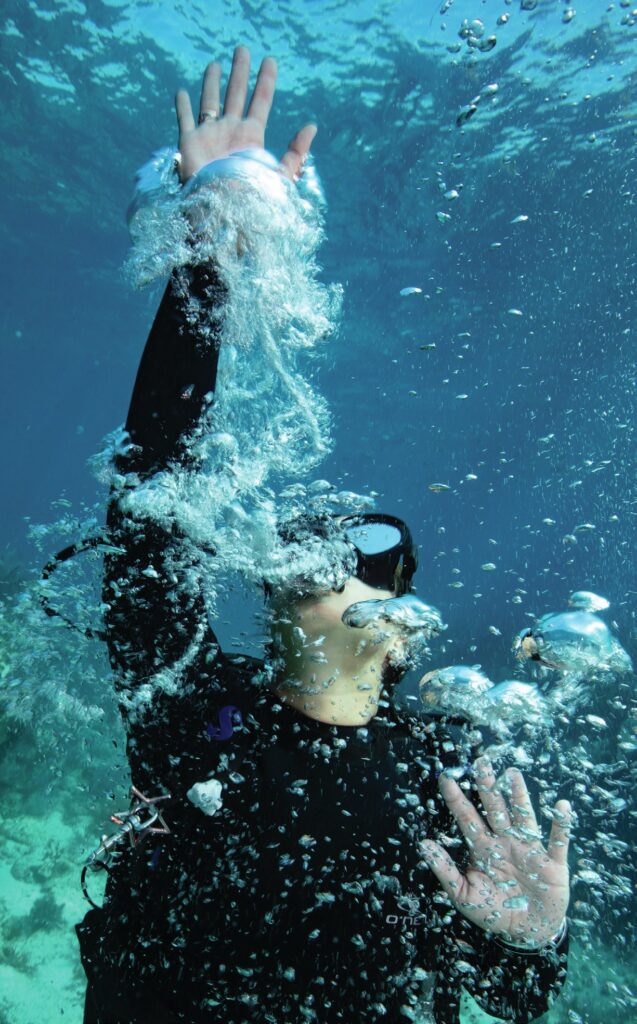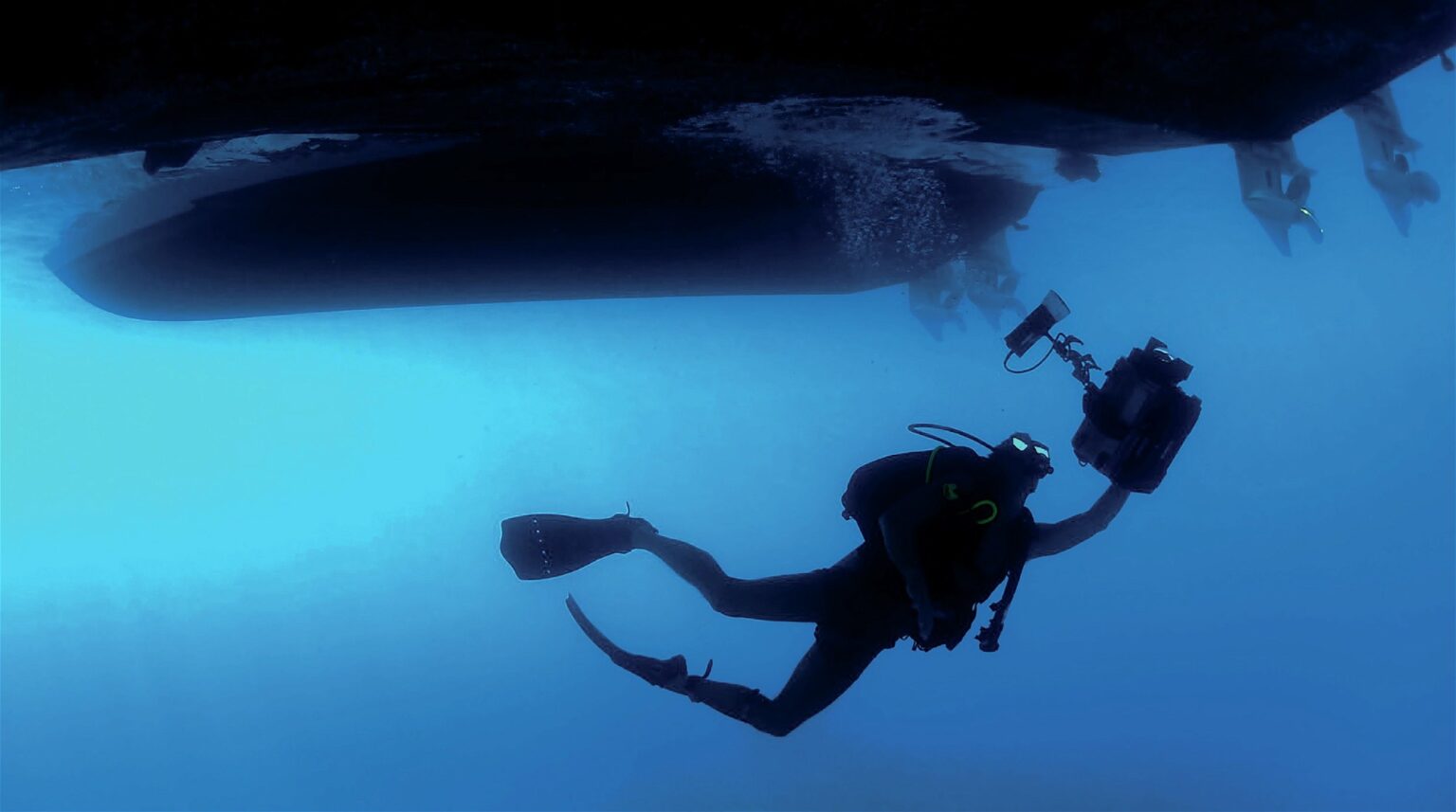6 February, 2022 had all the makings of a promising day out on the water in the Gulf of Mexico off Destin, Florida. The sun was up and the seas were calm, without another boat in sight. We all had at least Advanced Open Water certifications, but the captain and I were much more active than the third diver, who had only a couple of dives in the past year.
When we got to our first wreck, we asked him if he wanted to dive with the captain, who had more experience, or me, who had more credentials as an instructor and Course Director. I made the first dive with him, and aside from some minor delays on the descent while he equalised, we had an uneventful dive with a short bottom time and conservative safety stops on the ascent.
The Dive
During our surface interval, we motored about 16km offshore to a natural bottom reef at about 33m. We decided I would stay on the boat for the second dive. Both divers entered the water with no apparent issues. I watched the two distinct sets of bubbles in the calm sea but had no way to know if the third diver had similar delays to our first descent. Within minutes, I saw a huge burst of bubbles from below.
The Rescue
As I was processing the information, I forced myself to slow down as I’ve taught and demonstrated hundreds of times in rescue courses – I consciously stopped, thought, and prepared to act. The third diver surfaced without the captain. He was splashing around, face down in the water. I first thought he was having spasms, but then realised he was still trying to swim upward. I yelled, ‘Roll over!’ again and again. The hose from his regulator was whipping about at the surface, and then he stopped, with the hose the only thing still moving.
Stop and think went out the window, and I acted. I jumped into the water with my damp wetsuit around my waist and swam to the diver, about six metres from the boat. My countless rescue exercises came to mind, so I rolled him over, inflated his buoyancy compensator, and turned off his air to stop the whipping hose that had been attached to his second stage. I removed his regulator, which he had kept in his mouth despite no air and let it go, without a hose to stop it from sinking. He likely thought he had run out of air and done an emergency ascent.
I looked at his face, and my heart sank – his face was pale, his lips were blue, and he was not breathing. I assessed that it would be best to get him to the steady boat to begin care just as I had practiced and taught in rescue courses.
I kicked for the boat, towing him with a hand under hisneck to keep his head up while I swam and talked to him. It was then that I realised I was not wearing my fins and was fighting a current that was pushing me away from the boat. Knowing that this would not be quick anymore, I began rescue breaths. I did the first two incorrectly with his mask on and failing to pinch his nose. I thought he got them anyway, but I did two more proper ones to be..
While kicking to the boat, I gave him two more and heard a gurgling sound. I initially thought he was expelling the breaths, but realised it was his own raspy, wet breathing. I don’t remember exactly how we made it, but we got to the boat’s ladder. I removed his gear, and my first thought was that I would let the adrenaline of the moment help me hoist him on board, but I wasn’t able to. Reassessing, I stood at the top of the ladder and hooked my arms under his with him facing away, and I intended to bounce us up and down and fall backward into the boat on the third bounce.
Before I could try, he asked something like, “Where am I?” I’ve never felt a more sudden relief in my entire life. I asked if he could get himself up the ladder if I removed his fins. He said yes, and we got him back on the boat.
After sitting him down, I went to get the captain, who was surfacing. The third diver appeared fine, but as a precaution we put him on 32 percent enriched air nitrox (we didn’t have an oxygen kit), called the Coast Guard, and made great time getting to the Coast Guard station. Realising we were not out of the woods yet, we kept him on the nitrox and delivered him to the emergency medical service responders who met us at the Coast Guard station. We gave them his dive computer, and they took him to the local hospital.
In case there was no dive medicine doctor, we sent all the DAN numbers to him via text to give to the medical staff. The following day we called DAN to share the events and find out what we could do better.
I learned many lessons from the incident. The third diver’s regulator had come unscrewed from the low-pressure hose at almost 30m, so he thought he was suddenly out of air. He did an emergency ascent rather than trying to get deeper to share air, but the secondary regulator would have been the immediate solution to perform a safe ascent.
Lessons Learned
Fortunately, the result was only minor injuries to the third diver. At dinner the night before, some of our staff and instructors had talked about how it’s important to exhale the entire way up during an emergency ascent and keep your regulator in since you may gain a breath.
While he didn’t get an extra breath, keeping the regulator in his mouth may have prevented some water ingestion, and he prevented lung rupture by exhaling as much as he could on the way up. This incident is also a reminder of how important it is to ensure all connections are made properly and are snug during a gear check and to always have an oxygen kit on board.
While my in-water work was far from perfect, we train, teach, and repeat so that we remember most of it in times of crisis. I’ve never had a perfect dive that had nothing to teach. I hope others can learn from what I did and won’t have to experience it themselves.

For an extensive range of diving health and safety information and downloadable resources, research studies, incident summaries, and free e-Learning courses, take the time to explore DAN World’s new website.
This article was originally published in Scuba Diver ANZ #52.
Subscribe digitally and read more great stories like this from anywhere in the world in a mobile-friendly format. Link to the article








